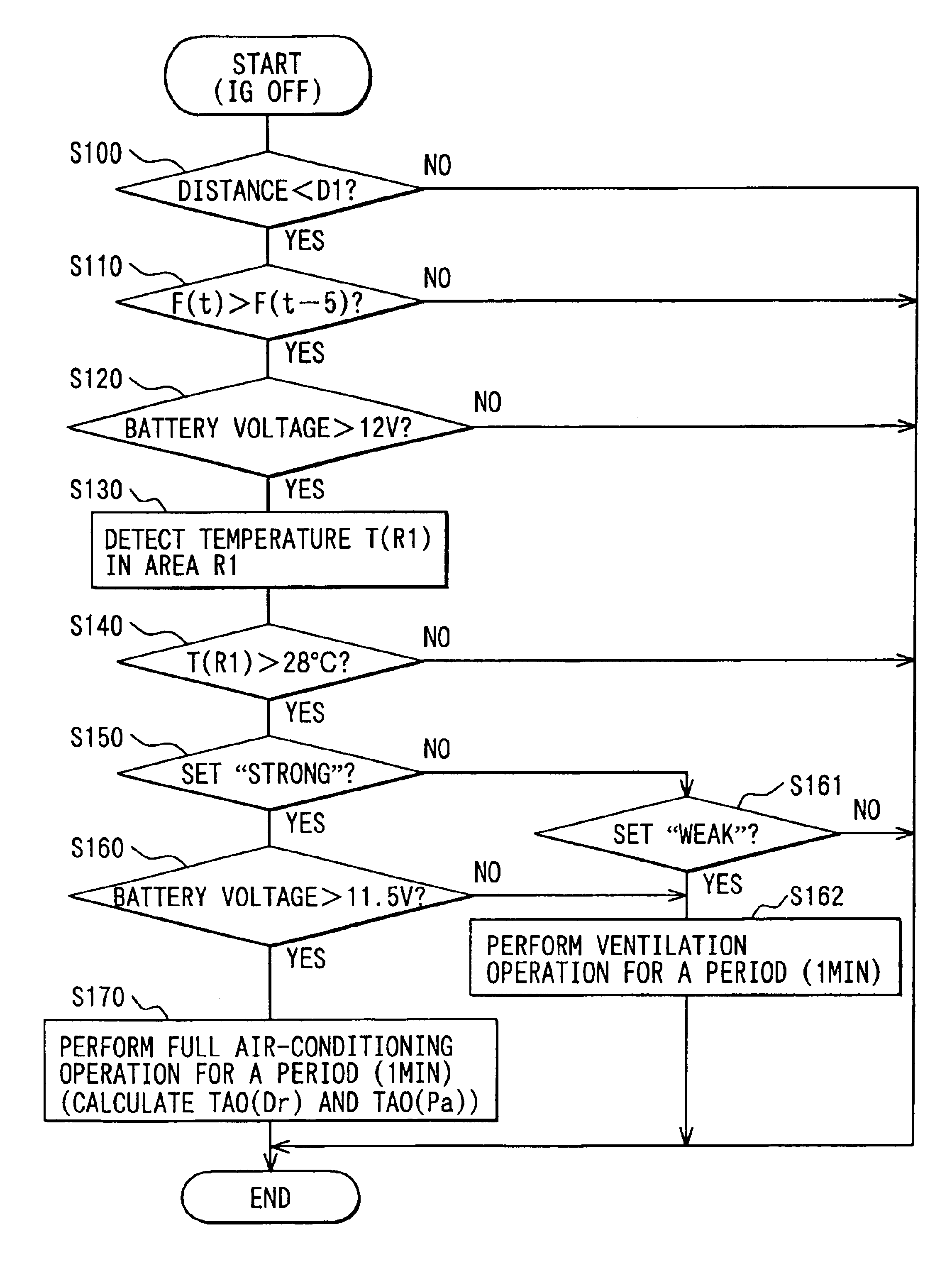Vehicle air conditioner and vehicle ventilation system
a technology for ventilation systems and vehicles, applied in the direction of vessel parts, instruments, vessel construction, etc., can solve the problems of large energy consumption of blowers, waste of battery energy, etc., and achieve the effect of effectively reducing energy consumption
- Summary
- Abstract
- Description
- Claims
- Application Information
AI Technical Summary
Benefits of technology
Problems solved by technology
Method used
Image
Examples
first embodiment
[0027](First Embodiment)
[0028]The first embodiment of the present invention will be now described with reference to FIGS. 1-9.
[0029]In the first embodiment of the present invention, an air conditioner is typically used for performing an air-conditioning in a passenger compartment of a hybrid vehicle which has both an engine and an electric motor for driving. The vehicle air conditioner is an automatic air conditioner which includes an air conditioning unit 1 and an air-conditioning electronic control unit (A / C ECU) 10. The air conditioning unit 1 can independently control an air temperature in a driver-seat side area (e.g., right side area in a right steering wheel) and an air temperature in a passenger-seat side area (e.g., left side area in the right steering wheel). Here, in the vehicle having the right steering wheel, the driver-seat side area includes a rear seat on the right side of the vehicle, and the passenger-seat side area includes a rear seat on the left side of the vehi...
second embodiment
[0086](Second Embodiment)
[0087]In the above-described first embodiment of the present invention, one of the ventilation operation and the air-conditioning operation can be selected for setting the air-conditioning state while the vehicle stops by the air outlet mode selecting switch 57. To the contrary, only the ventilation operation can be performed in a vehicle air conditioner according to the second embodiment of the present invention.
[0088]In the second embodiment, the A / C ECU 10 performs air conditioning control operation according to the flowchart in FIG. 10. The air conditioning control operation starts when the ignition switch IG is switched off and is repeated at certain intervals (e.g., 60 msec).
[0089]Firstly, the A / C ECU 10 determines whether the terminal voltage (battery voltage) of the battery B is larger than 12 V or not (S120). When the terminal voltage of the battery B is larger than 12 V, the A / C ECU 10 receives a driver-seat side temperature TIR(Dr) detected by the...
PUM
 Login to View More
Login to View More Abstract
Description
Claims
Application Information
 Login to View More
Login to View More - R&D
- Intellectual Property
- Life Sciences
- Materials
- Tech Scout
- Unparalleled Data Quality
- Higher Quality Content
- 60% Fewer Hallucinations
Browse by: Latest US Patents, China's latest patents, Technical Efficacy Thesaurus, Application Domain, Technology Topic, Popular Technical Reports.
© 2025 PatSnap. All rights reserved.Legal|Privacy policy|Modern Slavery Act Transparency Statement|Sitemap|About US| Contact US: help@patsnap.com



